|
by Lin Nulman, Historic Site Educator We've had a wonderful summer of visitors so far at King's Chapel. Cheryl created her own family reunion in the box pew of Senator Charles Sumner, who is an ancestor. She has his name tattooed on the sole of her foot! In 2021, we hosted a fascinating virtual talk about Sumner by Park Ranger Meaghan Michel, in cooperation with the National Park Service. "Let Me Be All Yours": The Romantic Friendship of Charles Sumner & Samuel Gridley Howe" is available online. Boston's Harborfest celebration ran this year from June 30 through July 4, and we welcomed almost 5000 visitors to the chapel, many of whom were walking the Freedom Trail and enjoying the historic sites. It was fun to have the Harborfest volunteers as visitors, as they contributed extra "stepping back in time" vibe to beautiful 18th-century King's Chapel. This past week, I was lucky enough to give a tour to a metal artist, who admired the chapel's stonework and old wood, and then was, of course, especially "into" the 1816 Revere and Son Foundry bell. And got into the bell literally, too! The History Program staff has every reason to look forward to the second half of summer.
0 Comments
by Lin Nulman, Historic Site Educator In April, for National Poetry Month, we had literary historian Rob Velella as our virtual guest speaker. This enjoyable talk on the “friendship poems” of Oliver Wendell Holmes Sr. focused on the literary and Harvard friends who inspired him. Dr. Holmes also wrote about King’s Chapel, where he was a member, on several occasions. Another Holmes poem I find both charming and poignant has a secret chapel connection. “The Last Leaf” was, as Rob explained to us, written about Thomas Melvill, whose memorial stone is attached to the back wall of the King’s Chapel. Whether it was placed there in his honor, or was displaced out of the Burying Ground at some point, I’m not sure. (Research to do!) The poem’s speaker sees aged Mr. Melvill walking in Boston, looking weary and lost and out of step with the 19th century. His clothes are from younger days in the 18th century: “the old three-cornered hat,/And the breeches, and all that...”. He seems to be thinking sadly of people long gone. The poem’s speaker wants to chuckle at his eccentric look, but also feels deeply for Melvill’s losses, knowing that he may find himself someday in Melvill’s old-fashioned shoes.
“The Last Leaf” was not a Holmes poem I knew, and as a King’s Chapel History Program educator, I’m happy Rob introduced us. I have Melvill’s image from the poem in my mind now whenever I see this stone, and he's become, vividly, a person who once lived, once took a walk, was once seen by an empathetic poet. The poem preserves a sense of his life, and the stone preserves his name and the dates of that lifetime. Together they get me thinking, during Preservation Month in May, about what preservation can be. It can be the profound preservation of this entire mid-18th-century church and crypt, so much of which is original. It can be stories about past people and events, whether in writing or in conversations we have with chapel visitors. It can also be quiet objects I pass by sometimes, that suddenly blossom into new meaning, as the Melvill stone did through Oliver Wendell Holmes’s poem. I have gladly collected “The Last Leaf” into my mental anthology of King’s Chapel writing. Other pieces in the collections include the poems and prose of member Sarah Wentworth Morton, and the novels The Scarlet Letter and Little Women. Come visit and ask us why! “The Last Leaf” felt especially good to discover during April, Literature and Poetry Month, because Thomas Melvill’s grandson, my beloved Herman Melville, had a whale of a time as a writer himself. by Lin Nulman, Historic Site Educator When visitors read the History Program’s informative signs in King’s Chapel, they see several portraits of its “bigwigs.” And some have very big wigs indeed, which is the origin of that expression! The history of gentlemen’s wigs from the mid-1600s to the early 1800s appears in the images along the chapel’s center aisle. Wig history is about wealth, elaborate high-fashion, a taste for artificiality in personal style, disease, taxes, and, in Boston, even Revolutionary feeling. Long, curly locks were the ideal for European men in the 1600s. Sources agree this ideal was a problem for King Louis the XIV of France, who began balding as a teenager. When he and King Charles II of England, his prematurely graying cousin, began to wear lush wigs in the mid-1600s, courtiers and the rich were quick to imitate them. Men’s wigs became an important fashion trend. King Charles II by John Michael Wright or studio, 1660s: image from Wikipedia The wigs of that period, and into the early 1700s, were larger than those of the later 1700s. Royal Governor Sir Edmund Andros, who seized a piece of Boston city property in the 1680s for the building of the first King’s Chapel (where the current chapel stands now), wore a typical wig with a huge flow of curls. Royal Governor Sir Edmund Andros by Frederick Stone Batcheller: Image from Wikipedia Wigs (some styles were called perukes or periwigs) were made of human, horse, or goat hair. White hair was desirable but rare, so powder allowed men to get the white “look” for darker wigs, or for their own hair. The powder, usually made from fine flour or starch, was also sometimes tinted blue or lavender. Styling products included beeswax or lard, and orange or herb scents were added to cover the odors of dirt, sweat, and rancid animal products. Wigs had practical benefits. Balding was not only unfashionable, it was also a symptom of syphilis, as were sores and other skin conditions. From the 1500s, the disease spread through Europe, and a wig could help hide these unfortunate symptoms. A wig also helped keep the head clean at a time when lice infestation was common. Men often shaved their heads, and let their wigmakers or servants boil infested wigs for the cleanest possible hair. A King’s Chapel funeral record of 1767 lists Timothy Winship, a Boston peruke-maker, whose profession would likely have combined a maker’s skill and artistry with follow-up cleaning and maintenance. Nov. 12, 1767 saw the loss of Timothy Winship and his wig skills. Wigs also provided a way to display wealth and social status. The amount and color of wig hair, the elegance of hair-dressing, and the elaborate clothes that went with the wig, all reflected the money and leisure necessary for a fine appearance. During the 18th century, wigs became smaller and more restrained. Peter Harrison, architect of the current King’s Chapel, shows this change in fashion. Whether this is a wig or his own powdered hair, the style would be the same, with precise side curls and likely a ponytail, or queue, tied at the nape of the neck. Architect Peter Harrison, done from a 1756 Nathaniel Smibert original: image from Wikipedia King’s Chapel’s first Unitarian minister was a young man when he took the position in the 1780s. In his portrait he wears the same style, called a buckled club, or club, wig, unless that’s his own powdered hair. The side curls are larger than Harrison’s, and the queue behind is more visible. It may be in shadow, or in a wig bag, a cloth accessory into which gentlemen tucked their queues to keep hair powder off their clothes. Reverend James Freeman, by Christian Gullager circa 1794, in the King’s Chapel Parish House Similar wigs appear in film adaptations of Jane Austen’s Sense and Sensibility on the head of Sir John Middleton, a man from the generation before that of the young protagonists. Austen’s “parent” characters were really 18th-century people, after all. I’m a fan of actors Robert Hardy and Mark Williams, each wearing the periwig of their character’s younger days, the former in the Ang Lee film and the latter in the 2008 miniseries. The tight styling of some wigs and the looser, more natural style of others, can be seen together in a scene from The Madness of King George. Some 18th-century wigs were made to resemble a man’s own hair, and some hair was then styled to resemble these wigs. I imagine a Prime Minister having an audience with a monarch might have his wig on. Here King George III (Nigel Hawthorne) and Prime Minister Pitt (Julian Wadham) discuss that the colonies need to be called “America”. The king is not pleased to be reminded! In the 18th century, wigs were a widespread fashion. Even servants wore them as part of their livery, or fancy “working clothes.” Some servants were finely dressed when they served, or stood ready to serve, being the human equivalent of elegant furnishings. Male servants continued to wear wigs as part of their uniforms even after gentlemen abandoned the fashion. In this brief scene from Pride and Prejudice, we see how the bowing servant’s old-fashioned livery and wig stand out among the fashionable gentlemen who no longer wear any such thing. Some well-off Bostonians did not wear wigs in portraits, choosing a more casual look instead. John Singleton Copley’s portraits of Nicholas Boylston and Joseph Barrell show them in banyans (house robes) of rich fabric. Boylston reveals his shaved head under a cap, and Barrell, a King’s Chapel member and current crypt resident, wears his own unpowdered hair or a loosely styled, plain brown wig. These gents may have been moderating or carefully crafting how they showed their wealth. In the Revolutionary period, the desire for political freedom from England was matched by a desire for cultural freedom from the decadence of European fashion and goods. Living a wealthy lifestyle could be difficult for American men who wanted to be seen as serious, virtuous citizens and supporters of the new nation’s ideals. After all, as the Declaration of Independence declared, they had soberly “pledge[d] to each other our Lives, our Fortunes and our sacred Honor”. Meanwhile, many lived lives of economic and social privilege to rival the minor English nobility. This print shows the extremes of European excess from which they were trying to distance themselves. Artist Philip Dawe titled it "The Macaroni. A real Character at the late Masquerade". The Macaronis were young English people who pushed luxurious fashion to heights that shocked some of their contemporaries, never mind us today. (The British were actually mocking unsophisticated, unstylish colonists when they sang that Yankee Doodle thought he was a Macaroni just for having a feather in his hat. The colonists adopted the song, added some patriotic verses, and sang it to defy the British troops. So there!) by Philip Dawe, 1773: Image from Wikipedia So newly American men did feel pressure to reject excesses in fashion and personal display. Their clothes, although still of fine fabrics, often had darker colors and less embellishment than the highly embroidered court clothes of the European upper classes. The wig’s loss of popularity in America could be one more response to that pressure. Rejecting imported European fashion partly drove the boycotts on British goods in Boston before the Revolution. The Boston Tea Party was just one example of the intense negative feeling connected to British goods. Meanwhile in Britain, a tax on hair powder after 1795 lessened the popularity of wigs there. The tax was part of Prime Minister William Pitt the Younger’s effort to pay for Britain’s wars. Most gents who powdered had to pay one guinea for a certificate from the local Justice of the Peace. Fines were imposed on those miscreants who powdered their wigs or hair illegally. In the 1800s, as all Jane Austen film fans know, many men began just to wear their natural hair. Some men still wore wigs, but fewer and fewer. A number of early American Presidents did, at least in formal settings, but interestingly enough, George Washington’s famous snowy “do” was his own powdered hair, not a wig at all. We are not sure whether he wore a wig or just powdered his hair when he attended a concert at King’s Chapel! For anyone wondering, most English and English colonial women did not wear wigs. The clouds of hair we see in portraits and period dramas were mostly their own long hair with padding inserted for height and shape, plus back-combing, extensions, animal fat, hair powder, and accessories. Women often favored gray, or bluish-gray powder, a lot of volume, and fashionably placed curls, as did the lovely Honourable Mrs. Thomas Graham, painted by Thomas Gainsborough in the 1770s. This interesting video features a step-by-step recreation of such a hairstyle on a patient actor. Image from Wikipedia by Lin A. Nulman, Historic Site Educator This post dedicated to the memory of Amanda Hallay. References and Further Reading: Brekke, Lizzie. “‘To Make a Figure’: Clothing and the Politics of Male Identity in 18th-Century America”. In Gender, Taste, and Material Culture in Britain and North America, 1700-1830. J. Styles and A. Vickery (Eds.). pp. 225-246. Yale UP. 2006. Free, Liv. "Historical Styles- 18th Century Hair Tutorial" https://www.youtube.com/watch?v=yq4qKsgv8hU Galke, Laura. “Perukes, Pomade, and Powder: Hair Care in the 1700s” Lives and Legacies: Stories from Historic Kenmore and George Washington’s Ferry Farm https://livesandlegaciesblog.org/2015/01/28/perukes-pomade-powder/ Hallay, Amanda. “THE ULTIMATE FASHION HISTORY: The 18th Century” https://www.youtube.com/watch?v=2OsmWUr_iiM Reilly, Lucas. “Why Did People Wear Powdered Wigs?”. Mental Floss https://www.mentalfloss.com/article/31056/why-did-people-wear-powdered-wigs “The Rise and Fall of the Powdered Wig”. American Battlefield Trust. https://www.battlefields.org/learn/head-tilting-history/rise-and-fall-powdered-wig Did you know that this church was once called "Queen's Chapell?" The handwritten text on the image above comes from our church records during the reign of Britain's Queen Anne, between 1702 and her death in 1714. This church's name originally reflected the English monarch and head of the Anglican Church, and the name changed based on the monarch's gender.
Join the History Program in returning to the notion of the church as "Queen's Chapel" through our March programming this Women's History Month. Despite the official powers yielded by Queen Mary II and Queen Anne, women at King's Chapel did not have a voice in the church's leadership until the 1920s and could not be elected as church leaders until the 1940s. Yet, women have played a crucial role in this site's history and in their communities since the church's founding. Uncover the stories and legacies of twelve women connected to King's Chapel over the past 335 years through the online exhibit Queen's Chapel: Women's History at King's Chapel. Be sure to visit the final page of the exhibit, where you'll have the opportunity to share a story of an influential woman in your own life or in King's Chapel's more recent history. by Lily Nunno, Historic Site Educator IntroductionKing’s Chapel is a space that encompasses many aspects of the history of Boston. This history includes the history of love and romance. As a church, King’s Chapel has been a site of marriages and of memorializing loved ones in stone. Depending on one's societal status, the city's residents, including various members of the King’s Chapel congregation, have experienced love and romance differently.
Around Valentine’s Day when we are thinking about our loved ones, we can explore a variety of questions related to love and relationships. How did people engage in romance when facing opposition and challenges? How was marriage not always a positive institution? Veterans Day, the anniversary of the November 11, 1918 Armistice that brought the First World War to an end, provides an opportunity to reflect on King’s Chapel and its community during World War I. Within a month of the Armistice, King’s Chapel formed a Committee on the War Memorial, dedicated to erecting a permanent memorial honoring King’s Chapel members involved in the war. The memorial, as seen today, was the culmination of several years of discussion and planning – it was ultimately unveiled and dedicated on November 11, 1925. During those years, the committee revealed their own understanding of how a memorial serves a dual role of honoring a recipient, while preserving the attitudes and values of the community and era that created it. For example, the committee debated whether to honor all members who served in the military during the war, or just those who lost their lives. Should they create a static memorial such as the marble archway that exists today or, maybe, a living memorial, such as a proposed annual lecture series during Lent? Ultimately, the decision was made to honor 3 individuals who died in service of the U.S. Military or while working abroad during the war. The memorial was to be erected with funds raised by the committee, not the congregation, leaving much of the fundraising efforts to the families of those being honored. This is how the church, 100 years ago, wanted their community to be remembered, through the stories of 3 individuals (pictured below): Edward Blake Robins, Jr., Hamilton Coolidge, and Helen Homans. King’s Chapel’s monthly calendar, circulated shortly after the war’s close, began the work of memorializing its members. After expressing the community’s sadness in the losses experienced, the Reverend Howard Brown wrote that King’s Chapel “also has a right to cherish a very noble pride in their accomplishments and their memory. [They] gave themselves without reserve to the cause for which the nation fought, and the service that they rendered displayed rare courage and intelligence.” by William Stilwell, Park Ranger at Boston African American National Historic Site  Captain Cabot Jackson Russel's name (botton left) on the King's Chapel Civil War memorial Captain Cabot Jackson Russel's name (botton left) on the King's Chapel Civil War memorial This Memorial Day Weekend in Boston marks the unveiling of the restored Robert Gould Shaw and Massachusetts 54th Regiment Memorial on Beacon St across from the State House. Originally dedicated on May 31, 1897, the St. Gaudens relief commemorates the Massachusetts 54th, the first all Black northern regiment in the Civil War, and their white commander, Col. Robert Gould Shaw. (While the Emancipation Proclamation allowed for Black men to serve in the Army it required white officers.) Col. Shaw and almost half the regiment were killed in July 1863 at the Battle of Fort Wagner in South Carolina. One of the men killed in the battle was 18 year old Captain Cabot Jackson Russel, a member of King’s Chapel whose name can be found on the Chapel’s Civil War memorial. By Jennifer Roesch, History Program Assistant, with the assistance of Malcolm F. Purinton, PhD and History Program Director Faye Charpentier  Colonial-era hops found in mid-coast Maine Colonial-era hops found in mid-coast Maine For many of us, the holiday season is a time of celebration, family, and feasting, even while we are in the midst of the global pandemic. While my fiancé and I weren’t able to celebrate Christmas with our families this year, we still curated a Christmas menu, sharing the moments of cooking and consuming with our friends on social media and family over FaceTime. During this time of COVID, we have been living on an island in Maine, working remotely and living an otherwise rather rustic life, where crafting new meals and cocktails have become a sort of new hobby and escape for both of us. While roaming through the woods of the island, we've discovered traces of early English colonists living here during the early 18th century, including wild hops that a settler would've grown to make beer at home. This not only excited me as a public historian, but also my fiancé who is a history professor and whose specialty happens to be the British Empire, specifically the history of beer. In colonial New England, women would often grow imported hops at home to brew beer for their families - a liquid much safer to consume than water at the time. Cider, and hard cider, was also widely consumed from local apples as well as spirits including rum that would have been distilled from the molasses that was imported as part of the Atlantic slave trade. Living with a historian who specializes in food and alcohol history, there are many stories I've heard over the years about how much alcohol was consumed in places like colonial Boston. Even the Puritans consumed alcohol, requiring new towns in Massachusetts to build taverns; Concord, for example, was threatened with a fine for not having one. This surprised me since the Puritans are often associated with abstinence. However, what the Puritans objected was the overconsumption of alcohol, not the consumption of alcohol itself. This played a large role in why Christmas was outlawed in Massachusetts prior to King's Chapel's establishment in 1686. From 1659 until 1681, there was a law that decreed: whoever shall be found observing such days as christmas or the like, either by forbearing labour, feasting, or any other way upon any such account as aforesaid, every such person so offending shall pay for every such offence five shillings as a fine to the country. The Puritans objected to the celebration of Christmas, not just because it was considered a pagan holiday since it is not mentioned in the Bible, but also because of the ways in which the English and other Europeans celebrated Christmas. You can watch the recording of our history program that focuses on this here. In England, as well as in colonial America, the onset of winter was a time when beer, wine, cider, etc. were done fermenting after the earlier Autumn harvest and ready to be consumed - right during the time of Christmas. These libations then played a large role in why there was an overconsumption of food and alcohol during the holiday season. Even the Anglican Book of Common Prayer, used by the 18th century King's Chapel congregation, warned of overconsumption in the Collect of the First Sunday of Advent - when the celebrations typically began near the beginning of December - saying, “Let us walk honestly, as in the day; not in rioting and drunkenefs, not in chambering and wantonnefs…” 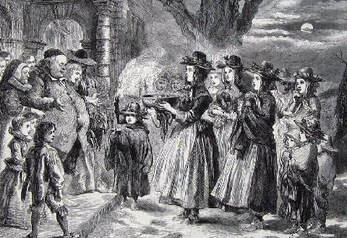 Wassailers in England from historic-uk.com Wassailers in England from historic-uk.com Yet, we still have plenty of records that show the extent of rioting and drunkenness during the season of Christmas in England as well in as places like colonial Boston. English Christmas-time traditions incorporated rowdiness and debauchery, which Puritans found offensive to correlate with a holiday intended to celebrate Jesus’s birth. One tradition was "wassailing" where groups of people - mostly young men - would drink and go rowdily around town, pre-dating the concept of Christmas caroling. Often times, these wassailers would dress in costumes, ranging from animal costumes to crossdressing, and rove around to homes of the wealthy, including employers and landlords, sing bawdy songs or perform skits, and demand food, drink, and money. In New England, this practice was especially common among fishermen and mariners in working-class port cities, including Boston. Records show that wassailing took place regularly in Boston in the 1760s and in the following decades, though the practice likely was occurring much earlier. With this in mind, it is not surprising that the Puritan preacher Cotton Mather published an anti-Christmas sermon in 1712: “Tis an Evident Affront unto the Grace of God, for Men to make the Birth of Our Holy Saviour an Encouragement and an Occasion for very Unholy Enormities...Can you in your Conscience think that our Holy Saviour is honoured by Mad Mirth, by long Eating, by hard Drinking, by lewd Gaming, by rude Revelling, by a Mass fit for none but a Saturn or a Bacchus, or the Night of a Mahometan Ramadam?....Shall it be said That at the Birth of our Saviour, for which we owe as High Praises to God as [the Heavenly host can do], We take the Time to please the Hellish Legions, and to do Actions that have much more Hell than of Heaven in them?” The King's Chapel Annals mention that the church published a counter-sermon in response to Mather's anti-Christmas one. What is even more fascinating that the Annals also mentions that in 1714 there were complaints that because Christmas fell on a Saturday, King's Chapel did not observe the regular Sunday sabbath, disrupting Puritan services with loud work noises. So what did these rowdy wassailers drink?! That especially peaked the interest of me and my fiancé. Depictions of wassailing, like the one below, almost always centers around a large cup or bowl, called a "wassail bowl," containing the alcoholic punch, simply called "wassail."  Buss, Robert William, Hollis, T.. Christmas celebrated by people playing instruments, eating and drinking: a man with white hair and a long white beard sitting watching a small man stirring punch in a bowl. Engraving by T. Hollis after R.W. Buss.. Engravings.. Place: Wellcome Collection. https://library-artstor-org.ezproxy.neu.edu/asset/24885598.  18th century English wassail bowl from the UK National Trust Collection. 18th century English wassail bowl from the UK National Trust Collection. A quick Google search of "wassail bowl" resulted in endless examples of their current locations in English historical societies, antique shops, etc. These bowls were often carved from wood, but other variations such as pewter and silver were also common. What connected these different types of wassail bowls was the size - they were large enough punch to share and drink with others. We took some time to find a more authentic recipe of the punch that would have crossed the Atlantic to colonial Boston and landed on a recipe from Punch. 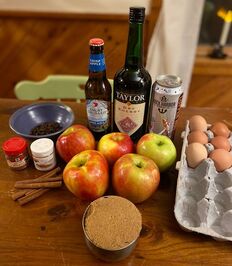 Ingredients for wassail punch. Ingredients for wassail punch. What made this recipe stand out is that the ingredients would have been accessible to many people in 18th century Boston. The eggs and apples would be easy to find and the ale and cider could have been brewed at home, while the sherry wine and spices would have been available at a shop with imported goods. Additionally, this just seemed like a fun and unique recipe for us to try in our own cabin kitchen. Many cocktail recipes of this age included the mixing of several kinds of alcohol, though not in the same way as cocktails today consist of mixing spirits. Other drinks mixed ale and cider together, while "Flips" would have also included eggs in most recipes.  Making the wassail Making the wassail This wassail recipe essentially had four phases, including baking sugared apples, heating a mixture of ale, cider, and sherry with spices (mulling), separating and beating egg whites and yokes, and then adding the apples and eggs to the large pot. To be completely honest, neither of us were optimistic that we would actually like the end result since historically accurate drinks are usually not very good to a modern palate. Beer and cider, for example, were not typically as carbonated with forced carbonation until around the early 20th century. Therefore, an actual wassail punch would have been less bubbly than what we made with the ale and cider we found at the local island markets. But much to our surprise, we actually enjoyed the wassail!  Wassail punch, garnished with a cinnamon stick Wassail punch, garnished with a cinnamon stick The spices and sweetness of the apples, mixed with the warm mixture of sherry, ale, and cider was reminiscent of the mulled wine we usually enjoy over the holidays. Though after a second helping, the thrill of the punch wore off and left us mystified of a time when colonists would walk around town all night drinking large quantities of a variation of this wassail. Perhaps in a post-COVID world, we will bring a large bowl of wassail to a holiday party and share the story of living through a pandemic, making wassail for the first time. But for now, we will continue to explore an enjoy creating new and historic recipes. Sugar and Spice and Everything Nice: a vegan public historian whips up a Figgy Pudding for today.12/26/2020 By Faye Charpentier, History Program Director 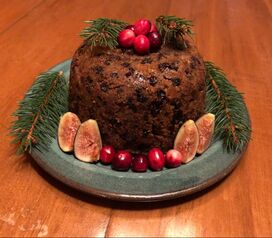 Food has been a method of connecting people and sharing culture across time and place. And related to that role food plays, taste and smell are some of the most powerful triggers of memory. It’s no wonder, then, that food plays an important role in the holiday traditions of so many people. This year, I tried making a traditional Christmas dessert that is new to me, but likely seen on the Christmas tables of King’s Chapel members in the 1700s: a Christmas pudding. As a homebaker and diehard fan of The Great British Baking Show, I have seen variations of these puddings, but had never seen one in real life. “Pudding” as I grew up with, is very different from the “puddings,” or “puds,” bakers are asked to make on the show. That said, special desserts of this variety likely would have been familiar to the colonial Anglicans who worshipped at King’s Chapel. Christmas Services and Songs at King's Chapel: English Traditions to Today's Celebrations12/17/2020 By Faye Charpentier, History Program Director Earlier this month, our “holiday history” focused on some of the cultural and secular aspects of Christmas traditions at churches like King’s Chapel. But Christmas, of course, is a religious holiday at its core. This week, as Christians around the world prepare to celebrate Christ’s birth, our history content focuses on what Christmas services looked like in King’s Chapel’s history as well as what music was incorporated into it. From its founding in 1686 through the American Revolution in the 1770s and 1780s, King’s Chapel was home to an Anglican congregation and followed a specific liturgy, held in common by all Churches of England in Britain and her colonies. By the time King’s Chapel was founded, the church’s liturgy was historic in its own right.
|
King's Chapel History ProgramDive deeper into King's Chapel's 337 year history on the History Program blog. Archives
July 2023
Categories
All
|








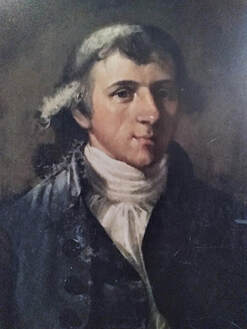

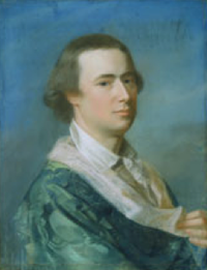

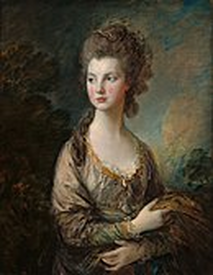




 RSS Feed
RSS Feed